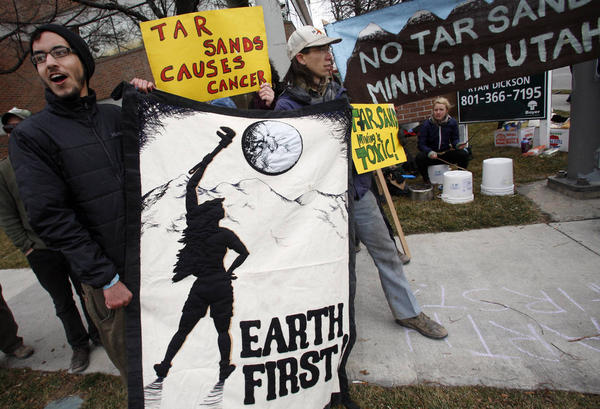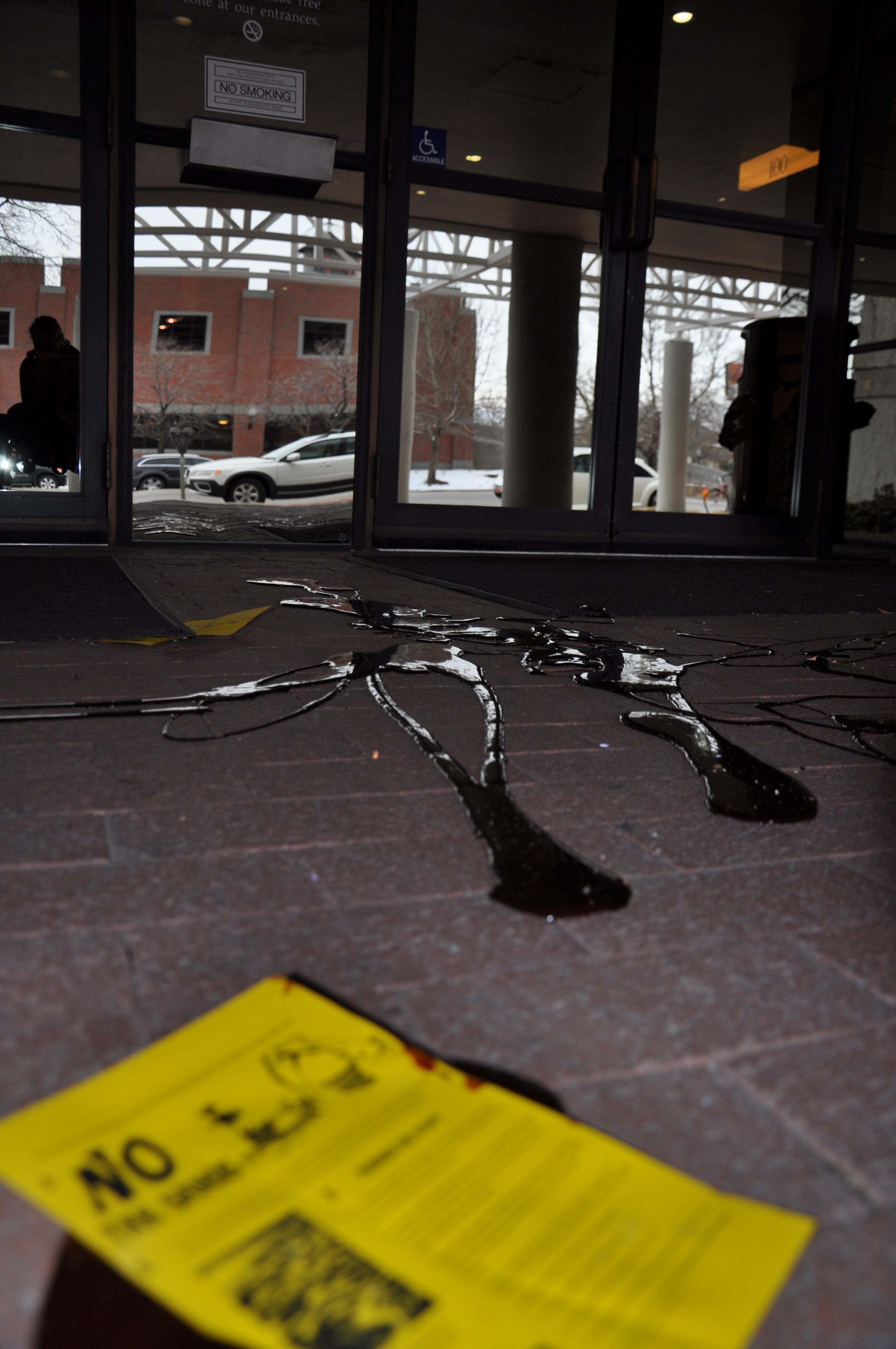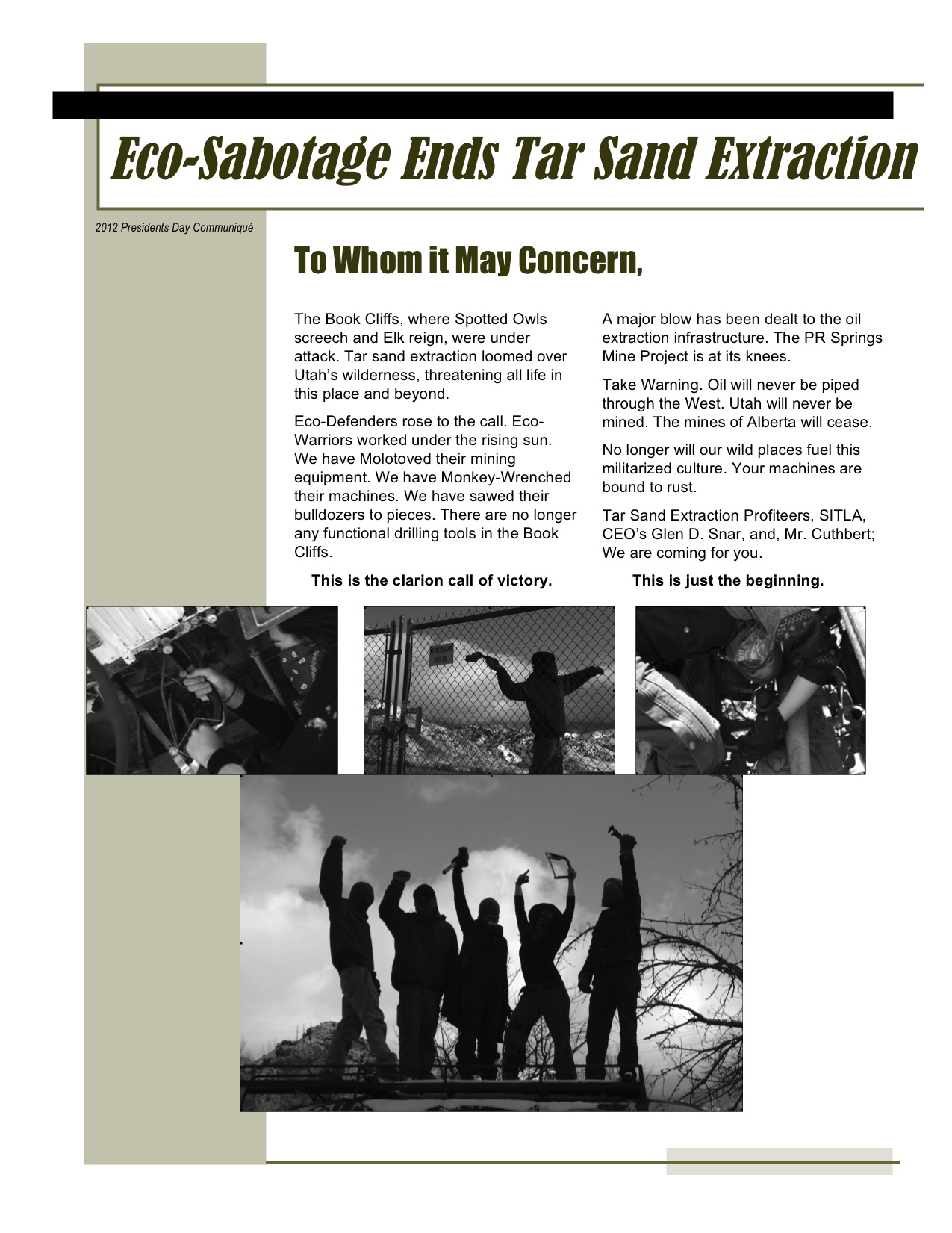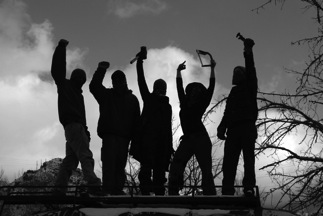18.2.12
As she stands among villagers in the highlands of western Panama, their chosen leader, Silvia Carrera, is an image of bucolic harmony. Then Carrera, elected chief or general cacique of the Ngäbe-Buglé community, gestures to a woman who hands her a bag of spent US riot-control equipment – rubber bullet casings, shotgun shells, sting-ball grenades, teargas canisters.
Panama national police, she explains, used these against her people only days earlier to break up a protest against government plans for a vast copper mine and hydroelectric schemes on their territory. Three young Ngäbe-Buglé men were killed, dozens were wounded and more than 100 detained.
What began with villagers at Ojo de Agua in Chiriquí province using trees and rocks to block the Pan-American highway earlier this month – trapping hundreds of lorries and busloads of tourists coming over the border from Costa Rica for six days – has now placed Panama at the forefront of the enduring and often violent clash between indigenous peoples and global demand for land, minerals and energy. Carrera is emerging as a pivotal figure in the conflict.
“Look how they treat us. What do we have to defend ourselves? We don’t have anything; we have only words,” Carrera protests. “We are defenceless. We don’t have weapons. We were attacked and it wasn’t just by land but by air too. Everything they do to us, to our land, to our companions who will not come back to life, hurts us.”
At the height of the protests, thousands of Ngäbe-Buglé came down from the hills to block the highway; in El Volcán and San Félix they briefly routed police and set fire to a police station. In Panama City, students and unions joined with indigenous protesters marching almost daily on the residence of President Ricardo Martinelli. Some daubed walls near the presidential palace with the words “Martinelli assassin”.
Carrera pulls from her satchel a hastily drawn-up agreement brokered by the Catholic church that obliges the Panamanian national assembly to discuss the issue. It did not guarantee that the projects would be halted. Neither she nor the Ngäbe-Buglé people expressed optimism that the government would keep its word on the mining issue.
“The village doesn’t believe it,” she says, “and it wouldn’t be the first time that the government threw around lies. They do not listen to the village. There was a similar massacre in 2010 and 2011, when there were deaths and injuries. Some were blinded, some of our companions lost limbs.” A cry goes up: “No to the miners! No to the hydroelectric!”
The Ngäbe-Buglé comarca, or territory, sits atop the huge Cerro Colorado copper deposit, the richest mineral deposit in Panama, possibly in all of central America. Pro-business Martinelli, a self-made supermarket tycoon, signed a deal with Canada’s Inmet Mining with a 20% Korean investment to extract as much as 270,000 tons of copper a year, along with gold and silver, over the 30-year lifespan of the proposed mine. Panama’s tribes form 10% of the population but, through a system of autonomous comarcas, they control 30% of the land, giving them greater leverage.
Martinelli could hardly have found a prouder adversary than Carrera who, at 42 and elected only in September, is the first woman to lead Panama’s largest indigenous tribe. “The land is our mother. It is because of her that we live,” she says simply. “The people will defend our mother.” Carrera holds Martinelli in scant regard. She accuses him of “mocking” indigenous people and considers his administration a government of businessmen who “use us to entertain themselves, saying one thing today and another tomorrow”.
Two days before the police cleared the roadblocks, the president invited her to the Palacio de las Garzas in Panamá City for a “good meal and a drink”. The Ngäbe-Buglé chief, who received education to secondary level, was unimpressed. The offer, she said, revealed “a lack of respect”.
In past mining disputes, the government blamed “foreign actors” and journalists for stirring up trouble. Last week it accused the Ngäbe-Buglé of “kidnapping” and “hostage-taking” when referring to the travellers delayed on the highway. By the time the smoke cleared, Panama’s foreign minister, Roberto Henríquez, conceded that his government was “only producing deeper wounds”.
Carrera gestures to women in the group she says have been injured. Over the previous 24 hours she had travelled between towns to ensure that all the protesters had been released, but some reports suggest that dozens are still missing. One woman holds up a bandaged hand, a wound that she says came from an army bullet.
With the dead – including Jerónimo Rodríguez Tugri, who had his jaw blown off, and Mauricio Méndez, a learning-disabled 16-year-old – still lying in the mortuary, Carrera’s anger is plain. “This is the struggle of the indigenous people. We are trying to make contact, asking our international brothers to join us in solidarity. We call for justice from the UN. The government doesn’t want other countries to know about this. That’s why they cut off our cellphone service. We couldn’t find each other. Nobody knew anything. They were trying to convince us to give up.”
Fearful of the environmental and political fallout, governments throughout central America are tightening mining controls. But Martinelli, who came to power with the campaign slogan “walking in the shoes of the people”, seems determined to find a way around legislation that protects indigenous mineral, water and environmental resources from exploitation.
The Martinelli government faces accusations of systematic cronyism in the allocation of more than $12bn in new construction projects, funded in part by increased revenue anticipated from a $5.25bn Panama canal expansion programme. Among the disputed projects is a $775m highway that will encircle Panama City’s old quarter of Casco Viejo, cutting it off from the sea and isolating a new Frank Gehry-designed museum celebrating Panama’s influence as a three-million-year-old land bridge between the Americas. Critics say the road is pointless and Unesco is threatening to withdraw its world heritage site designation if it proceeds.
Despite the region’s history of conflict and shady banking practices, Panama is aggressively positioning itself both as an economic haven (GDP growth is running at close to 7.5%) and a tourist and eco-tourist destination. New skyscrapers thrust up into the humidity like a mini-Dubai; chic restaurants and hotels are opening up .
Officials express concern that the Ngäbe-Buglé and other indigenous disputes may undo Panama’s carefully orchestrated PR push, spotlighting the disparity of wealth in a country where 40% of the population live in poverty. “The government says Good, Panama is growing its economy. Yet the economy is for a few bellaco [macho men],” Carrera says. “But progress should be for the majority and for this we will go into the street, and from frontier to frontier, to protest.”
The tourism Panama seeks is threatening their way of life, she says. Along the coast, private developments are beginning to restrict access to the sea. “We work and we own property, but the tourists take the land and the best property. Then we can’t go there.”
At the bottom of the hill the general cacique waits for a bus to take her and several dozen women to Panama City, 200km to the west, for another anti-government rally, where they will be joined by the Kuna and representatives of the Emberá and Wounaan peoples, who are opposing encroachment of farmers on their land in the eastern provinces. Carrera vows that the Ngäbe-Buglé campaign will continue. “We are not violent. We just want to reclaim our rights and justice. Above all, we want to live in peace and tranquility.”





